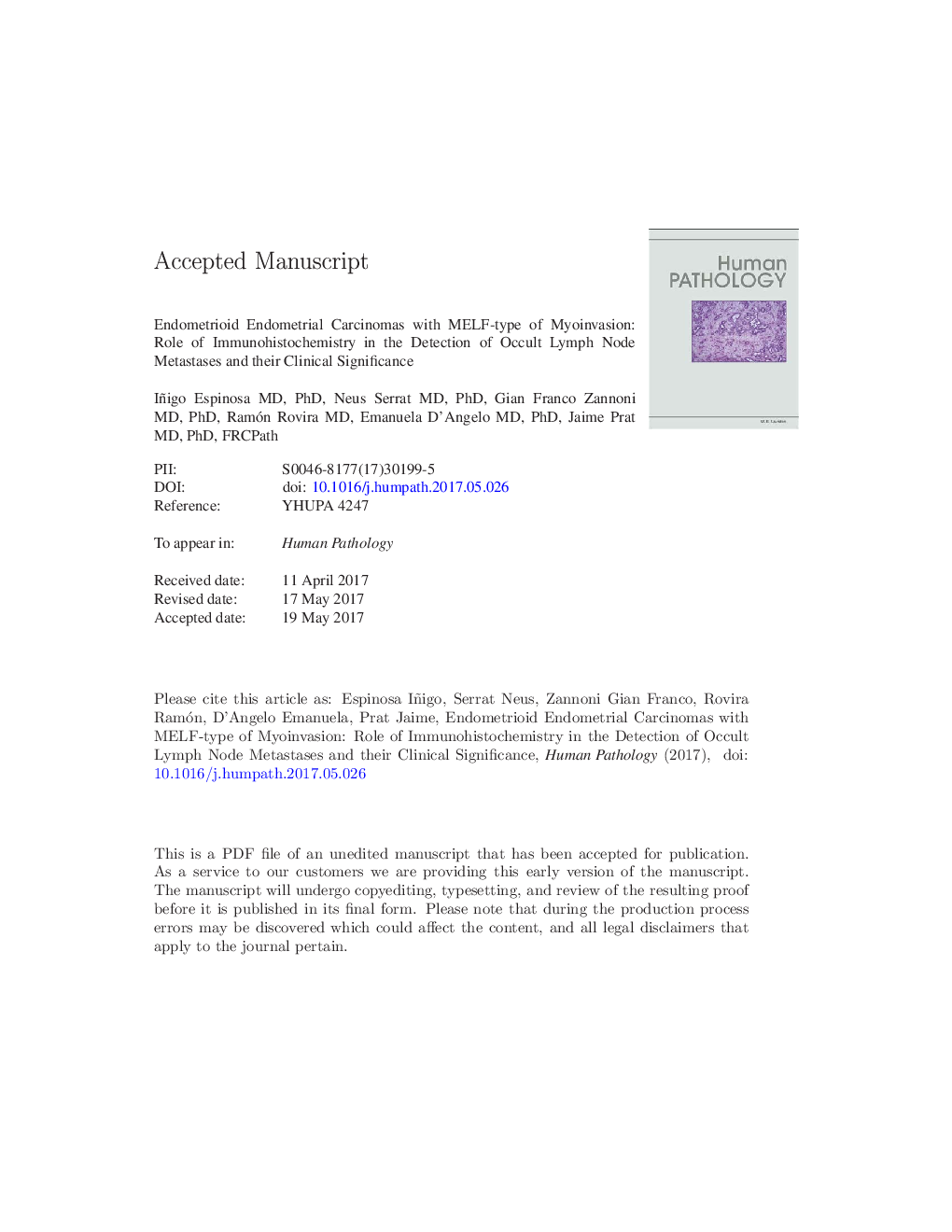| Article ID | Journal | Published Year | Pages | File Type |
|---|---|---|---|---|
| 8807701 | Human Pathology | 2017 | 24 Pages |
Abstract
In endometrioid endometrial carcinomas (EECs), microcystic, elongated, and fragmented (MELF) myoinvasion is associated with easily overlooked lymph node metastases; however, the role of immunohistochemistry in their detection and their clinical significance have not been addressed. We identified MELF in 43 of 101 (43%) myoinvasive EECs. Nodes were removed in 49 (49%), 25 with MELF and 24 without MELF. Metastases were initially reported in 3 of the former (12%) and 2 of the latter (8%). All negative nodes were reviewed, and cytokeratin immunohistochemistry was performed. Three metastases were identified in the MELF group but none in the EECs without MELF. By immunohistochemistry, metastatic nodal isolated tumor cells (ITCs) were found in 6 of the remaining 19 MELF-positive cases. In contrast, lymph node metastases were detected in only 2 of the 22 EECs without MELF. MELF-positive cases had more lymph node metastases (PÂ =Â .03) than myoinvasive EECs without MELF. At follow-up, all 6 patients with grade 1-2 EECs and nodal ITCs/micrometastases were alive (5 no evidence of disease and 1 with perineal disease). In contrast, 3 of 4 patients with grade 3 EECs and nodal ITCs/micrometastases died of disease, and the other patient was alive with tumor. In MELF, the frequency of ITCs/micrometastases in apparently negative lymph nodes is high. In patients with grade 1-2 EEC who had not received chemotherapy, the presence of nodal ITCs/micrometastases did not affect survival. In contrast, in high-grade tumors, ITCs/micrometastases were associated with unfavorable prognosis. Immunohistochemistry should be done in MELF-positive cases to detect occult lymph node metastases, especially in high-grade tumors.
Related Topics
Health Sciences
Medicine and Dentistry
Pathology and Medical Technology
Authors
Iñigo MD, PhD, Neus MD, PhD, Gian Franco MD, PhD, Ramón MD, Emanuela MD, PhD, Jaime MD, PhD, FRCPath,
